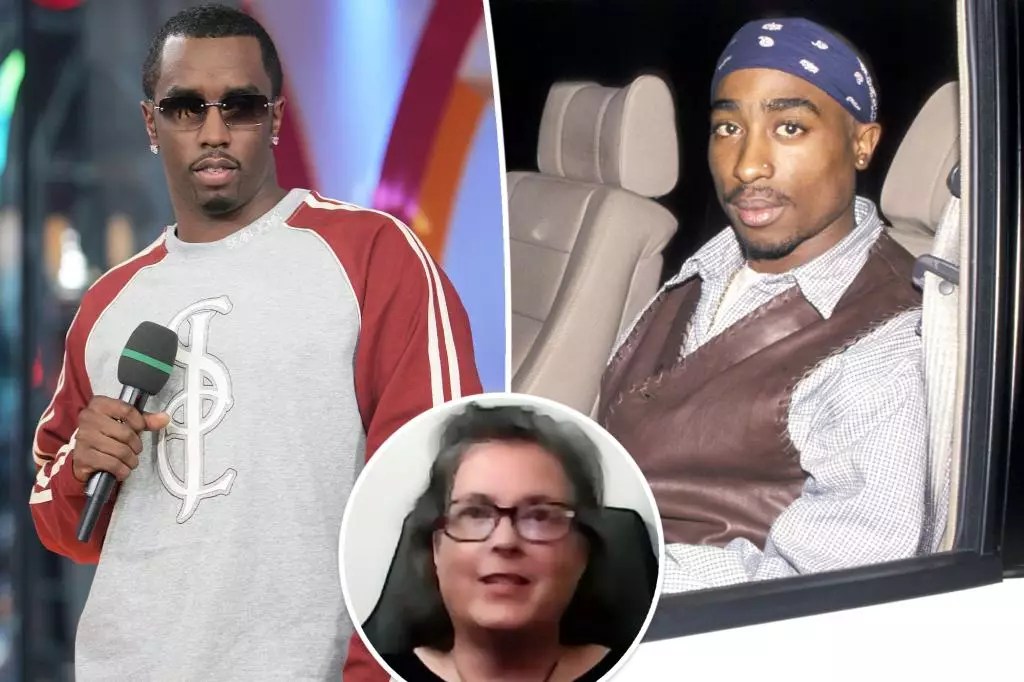The murder of Tupac Shakur remains one of the most infamous unsolved crimes in music history. As a cultural icon, Tupac’s life was marked by tumultuous events that tragically culminated in his untimely demise in 1996. Recognized not only as a gifted rap artist but also as a powerful social commentator, Tupac’s legacy is shrouded in rumors and conspiracy theories that continue to endure. Recently, crime scene investigator Sheryl McCollum suggested a potential link between Sean “Diddy” Combs and the infamous drive-by shooting that claimed Tupac’s life—an assertion that has reignited discussions surrounding both men and their associations within the hip-hop community.
In 1994, Tupac was shot in a robbery at Quad Studios in New York City, an event that foreshadowed the tragic events leading to his death two years later. At the time of the incident, Diddy was reportedly in the studio with a large entourage, which raises several questions about the dynamics of the incident. Why was Tupac alone in facing the attackers, who did not seem to threaten the much larger group accompanying Diddy? Such discrepancies raise eyebrows and suggest a deeper underlying story that has yet to be thoroughly explored.
McCollum addresses the 1994 shooting as a pivotal moment that could have lasting implications for Tupac’s life. She notes that both significant gunshot incidents—one in 1994 and the other leading to his death in 1996—occurred at times when Tupac found himself trapped, both physically and metaphorically. The circumstances surrounding these events imply a level of foreknowledge that would narrow down the pool of suspects significantly. McCollum asserts that the absence of video footage during both incidents is suspicious and suggests that only a select few individuals would know Tupac’s whereabouts during these critical moments.
Tupac himself felt that individuals connected to Bad Boy Records—for which Diddy was a prominent figure—played a role in his misfortunes. His emotions were raw, as reflected in interviews with magazines like Vibe, where he expressed feelings of betrayal and abandonment in the aftermath of the 1994 shooting. This sentiment amplifies the complexity of the rivalry between Tupac and other prominent rappers of the time, notably Notorious B.I.G., another central figure in the unfolding drama that enveloped the hip-hop scene during the 1990s.
The East Coast-West Coast rivalry of the 1990s, which pitted artists from New York against those from California, is deeply etched in hip-hop history. It illustrates how personal conflicts often transcended mere verbal exchanges to manifest in real-world violence. The rivalry not only tarnished the legacies of these artists but prompted a broader societal commentary on fame, rivalry, and the consequences of living a life in the limelight. Against this backdrop, Diddy and Biggie’s vehement denial of ties to Tupac’s and subsequently Biggie’s own deaths continues to evoke skepticism among fans and scholars alike.
The fact that Biggie was murdered in 1997, a mere six months after Tupac’s death, brings a haunting symmetry to the situation, reinforcing the narrative of a tragic cycle of violence present in the hip-hop community. The unresolved nature of both murders leaves an indelible mark on cultural discussions around violence, fame, and legacy.
With reports emerging that Tupac’s family is considering legal action against Diddy, fueled by information from individuals formerly associated with him, the conversation surrounding accountability becomes increasingly urgent. The recently charged suspect, Duane “Keefe D” Davis, introduced allegations that a $1 million hit was placed on Tupac by Combs. Although Diddy awaits trial for unrelated charges, these new developments could dramatically alter public perception and the legal landscape surrounding the case.
The thirst for justice regarding Tupac Shakur’s death resonates deeply within the hearts of his fans and advocates. It symbolizes not merely the desire for closure but also the profound implications that his legacy continues to inspire within music, social activism, and broader cultural discourses.
The turbulent lives of these influential figures are not just tales of rivalry; they are poignant reminders of the fragility of life and the responsibilities that accompany fame. As investigations unfold and new testimonies emerge, the truth resting beneath the intricate web of stories may one day be revealed, hopefully paving the way for justice for Tupac and others caught in the crossfire of an unforgiving world.







Leave a Reply